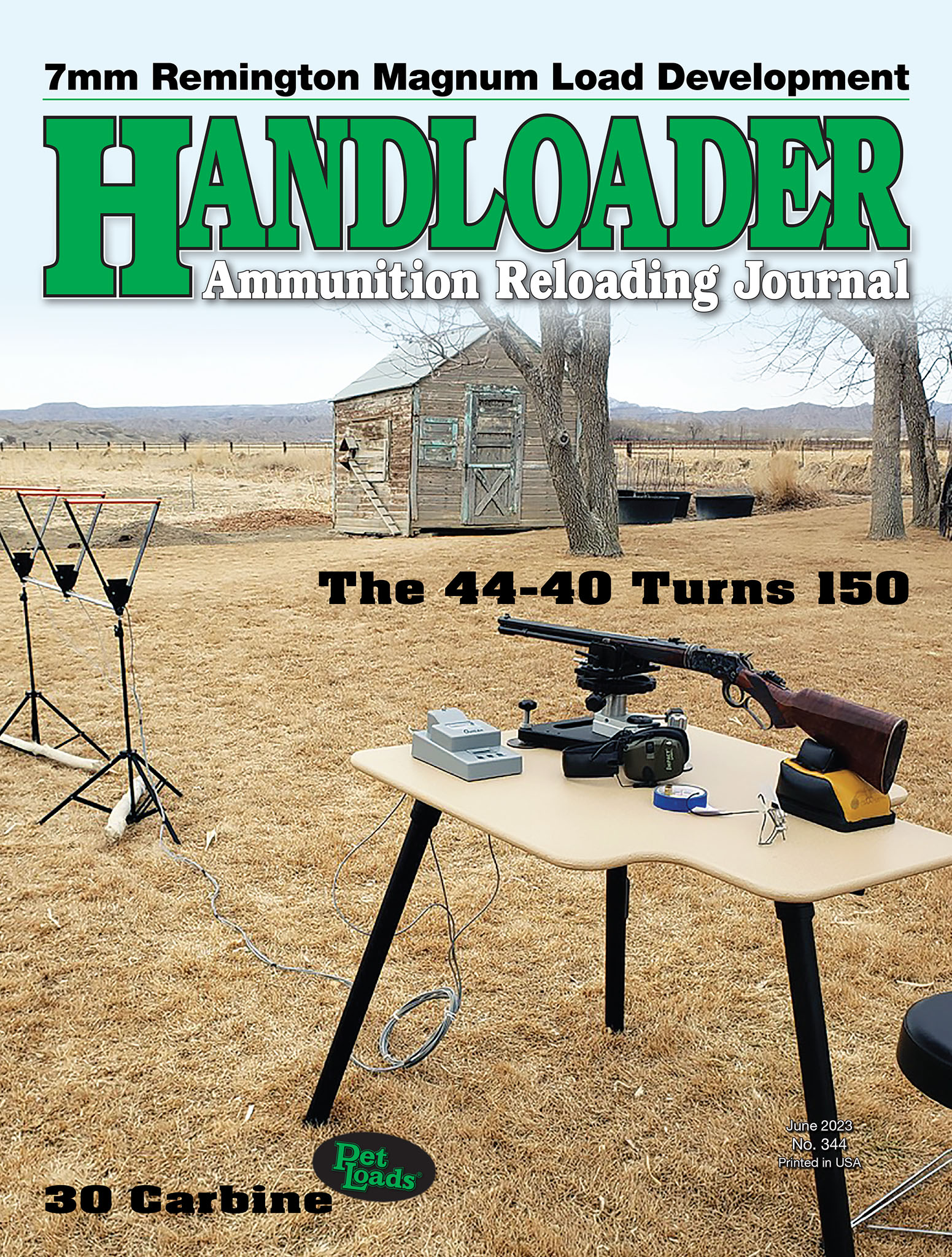The first two pages of the
Remington 1999 Gun Catalog show a Model 700 rifle and two cartridges. One of them was a 300 Weatherby Magnum for which Remington began chambering the Model 700 in 1989. Loaded ammunition also became available in that year. This spoke volumes regarding the popularity of the cartridge and amount of ammunition fired every hunting season.
The second one pictured was a round called the 300 Remington Ultra Magnum (non-belted). At first glance, it doesn’t appear any different than the 300 Weatherby. Remington thought so too because it surrounded both photos with dimensions to three decimal places. The differences were very subtle. The case diameter at the shoulder was .030 inch greater for the Remington and the base diameter was .037 inch larger. Then, there was no magnum belt. What was going on here?
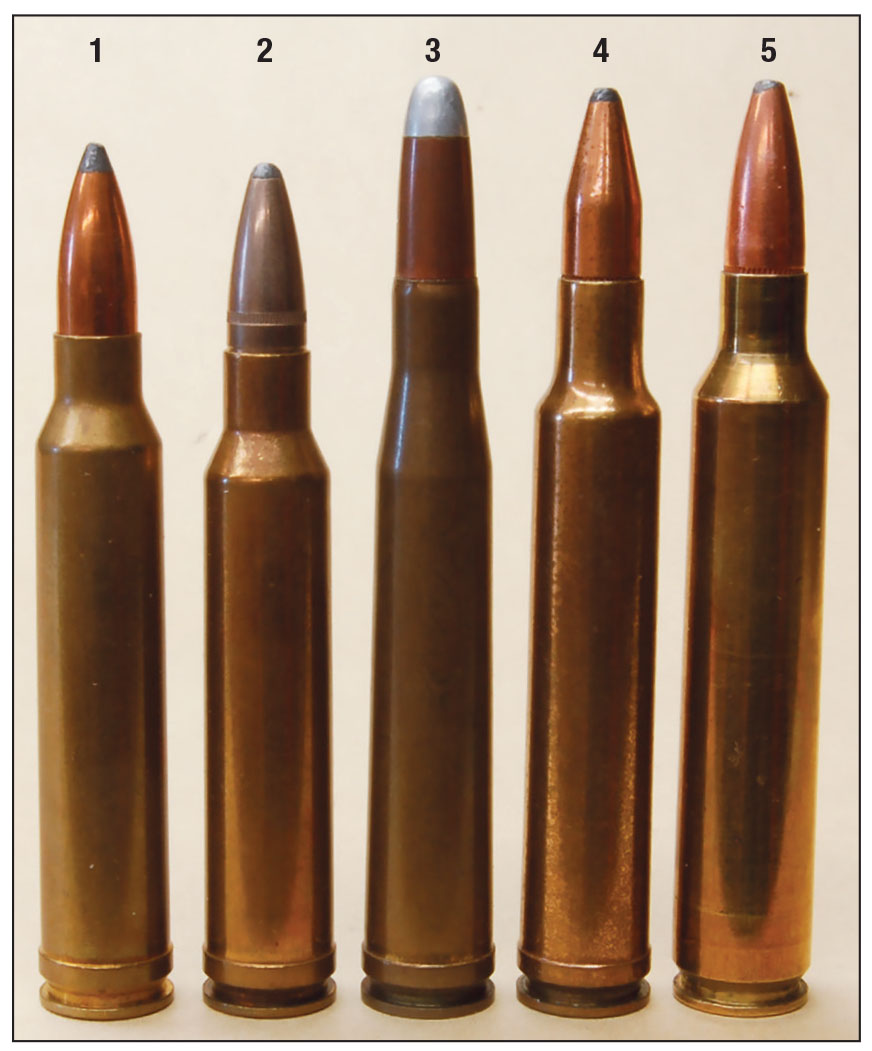
Competing 300 magnum cartridges include the: (1) 300 Winchester, (2) 308 Norma, (3) 300 H&H, (4) 300 Weatherby and (5) 300 Remington Ultra Magnum.
The catalog text stated, “We’ve introduced the first new centerfire magnum case design in 87 years…” Well, not really. What Remington had done was follow the lead of wildcatters who were using the old 404 Rimless Nitro Express Jeffery case – when they could be found! Why the Jeffery case was picked is an interesting story.
A W.J. Jeffery catalog dated 1910-1911, announced “The New .404 Rifle.” Of course, the new rifle used a Mauser Model 98 action, probably a Mauser barrel and was even stocked by Mauser, who then put the Jeffery name on it. Mauser included the 404 in its line of commercial sporters calling it the 10.75x73mm. The important thing is the diameter of the 404 case base. It’s .541 to .544 inch on rounds in my collection. Since the case is a rimless design, the rim is exactly the same size, or some .075 inch greater than the 7.9x57mm case for which the M98 action was designed. Jeffery must have worked this out with Mauser engineers to be the largest diameter case base that would still leave enough steel in the ring around two-thirds of the bolt face that positioned the case during the feeding and extraction. If the ring walls were too thin, they would tend to break off under rough handling or even during case hardening of the bolt.
Meanwhile, Holland & Holland (H&H) was developing the 400/375 Belted Rimless Express, a shorter and smaller diameter case than the later famous belted round. Light Mannlicher-Schoenauer actions upon which H&H was building the rifles, soon proved unable to withstand the pressure generated by the cartridge. They were replaced by the far stronger Mauser M98.
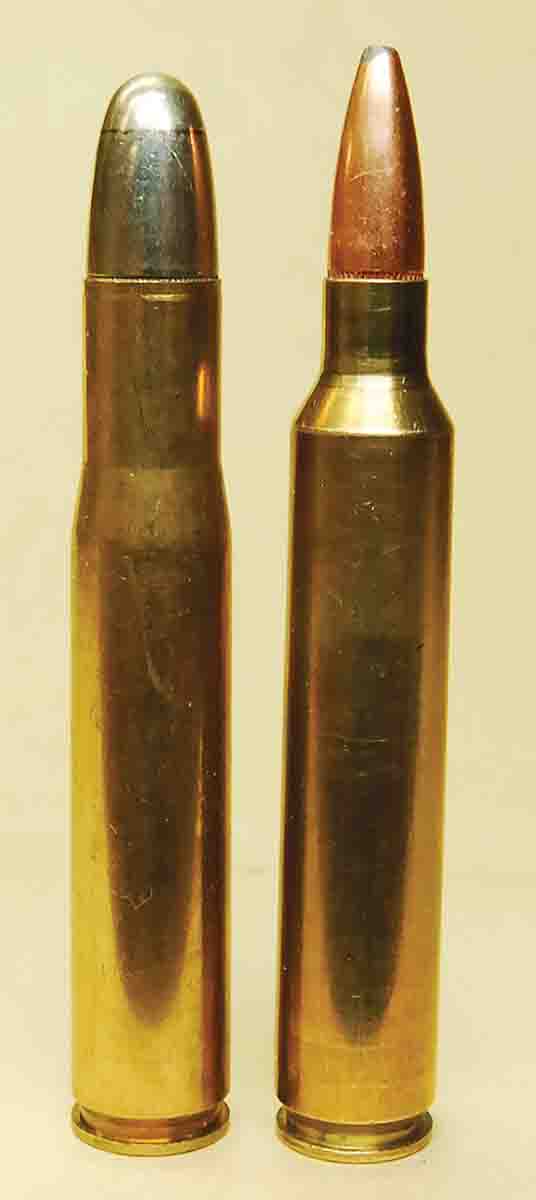
The 404 Jeffery of 1910 (left) is the parent case of the 300 Remington Ultra Magnum (right).
Then, in 1906, Sir Charles Ross introduced the 280 Ross, one of the first modern high-velocity, small-bore rounds. While the Ross rifle and cartridge were intended for military use, H&H saw the sporting application. In 1910, the company introduced the 275 H&H Belted Magnum using an enlarged version of the earlier belted case. The belt and rim dimensions were the same as today’s belted magnums. Also, the rim diameter was only a few thousandths of an inch smaller than the 404 Jeffery, thus using the same bolt face recess, so that it appears that the base dimensions of the two most popular basic cases used to form virtually all big-bore and high-velocity cartridges of today were determined more than 100 years ago by the limitations of an action that was even older than they were!
Getting back to the 300 Remington Ultra Magnum (300 RUM), it is recorded that Remington was interested in high-velocity 7mm- and .30-caliber cartridges prior to World War II. The company was certainly familiar with the 275 H&H, 300 H&H and 30 Newton, but knew the powders available then couldn’t add much to velocity, which was becoming a hot topic with American rifle folk. DuPont released IMR-4350 powder in 1940, but World War II stopped all experimenting. Then, after the war ended in 1945, Roy Weatherby began selling rifles for the 300 Weatherby, one of the first of his line of cartridges.
We all know the 300 Weatherby as the old 300 H&H, blown-out for maximum powder capacity. Since it had arguably more capacity than needed for the powders then available, a similar round would be pointless. There was also the problem of cup-and-core bullets breaking up and not penetrating at normal hunting ranges when driven at maximum velocities. If the folks at Remington were still around thinking of a new .30-caliber magnum, they probably looked around, decided it wasn’t worth it, chambered the Model 721 in 300 H&H and called it done.
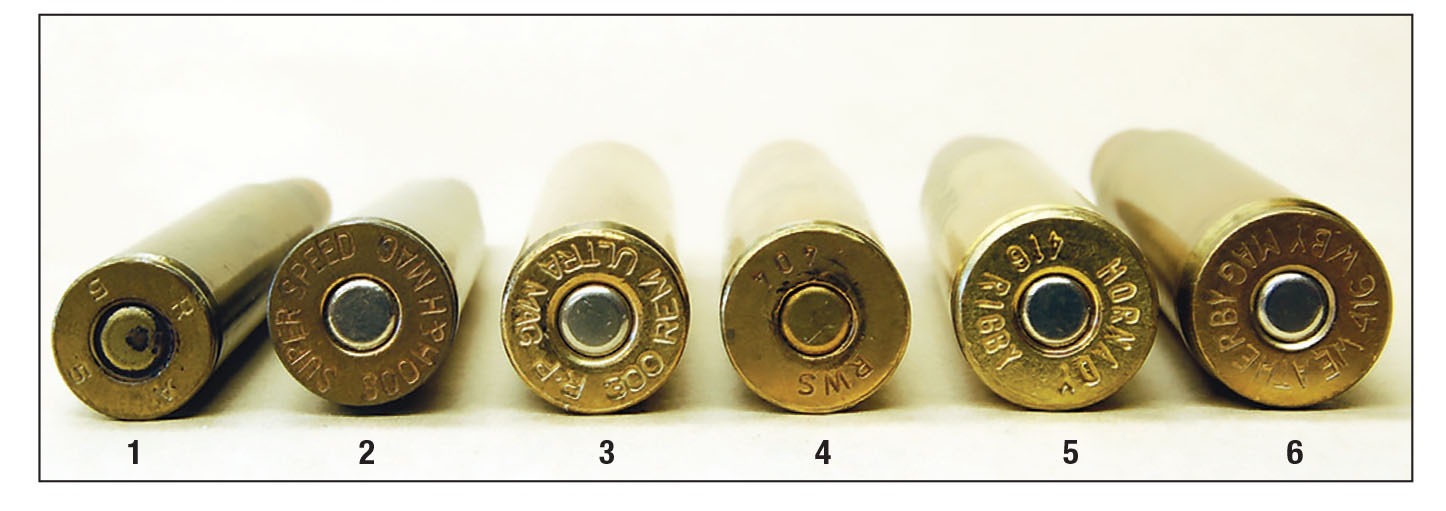
Common case base sizes in ascending order: (1) 30-06, (2) 300 H&H Magnum, (3) 300 RUM, (4) 404 Jeffery, (5) 416 Rigby and (6) 416 Weatherby Magnum.
Thus, the appearance of the 300 RUM was only a mild surprise considering that new rifles for the 300 Weatherby were selling well in both classic models and the modern plastic and plywood creations. However, if we could have looked into the future in 1999, the new round would have been obvious. At least 10 new cartridges based on the 404 Jeffery appeared in the next few years. It was almost as if the self-contained metallic cartridge era was beginning anew.
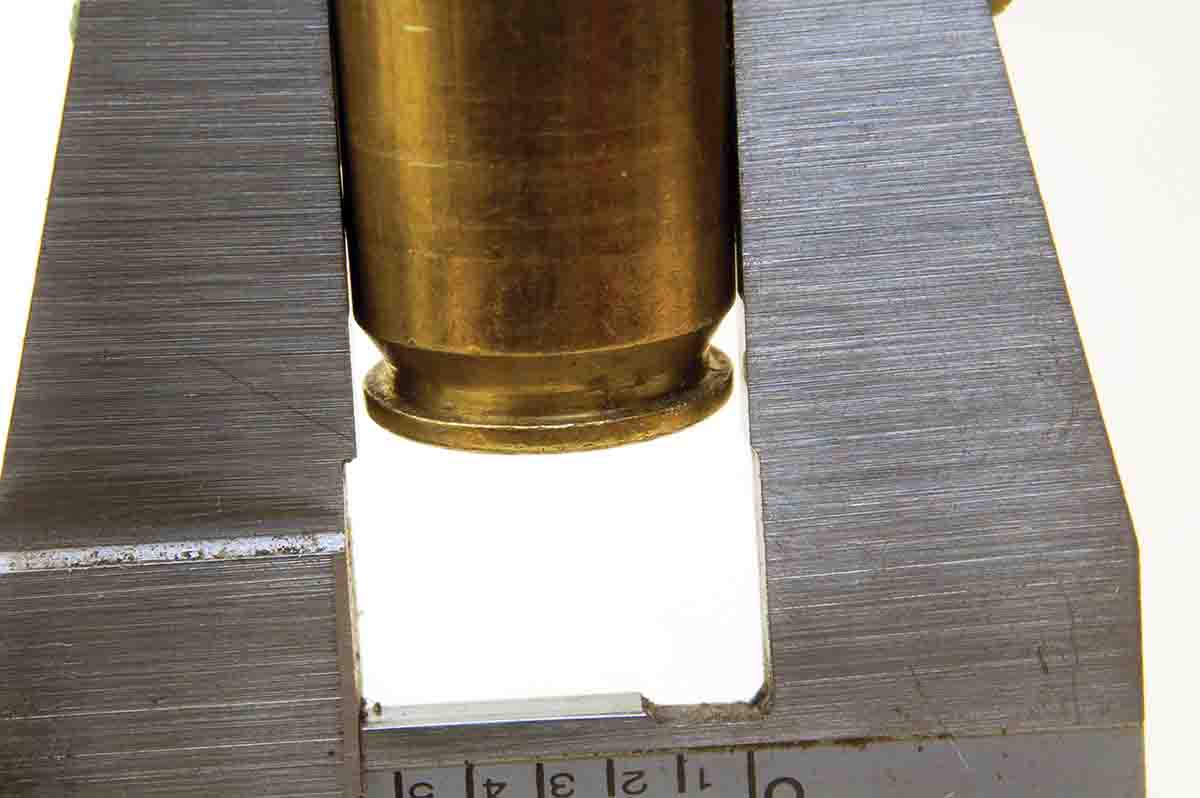
The slightly rebated rim of the 300 RUM is plainly seen clamped between the jaws of a micrometer caliper.
The 300 RUM reduces the 400’s neck to 30 caliber, moves the shoulder forward some .300 inch and sharpens it to 30 degrees. The body taper is decreased very little. The new internal case volume of the 300 RUM is about 12 percent greater than the 300 Winchester, but 15 percent less than the 30-378 Weatherby. The MAP (maximum average pressure) figure for each of these is 65,000 psi (transducer). The standard test barrel is 24 inches for the first two and 26 inches for the latter. Interestingly, Remington’s 300 RUM rifles have 26-inch barrels, which add about 50 feet per second (fps) to catalog published velocities.
In 1999, the initial Remington load pushed a Nosler Partition 180- grain bullet to 3,250 fps with 4,221 foot-pounds of energy at the muzzle. With a 200-yard zero, the Nosler was 2.6 inches high at 150 yards, 3 inches low at 300, 12.7 inches low at 400 and had 2,407 foot-pounds of energy when it got there. Given a reliable rangefinder, the 300 RUM seems capable of taking most big game on Earth at greater range than would usually be prudent.
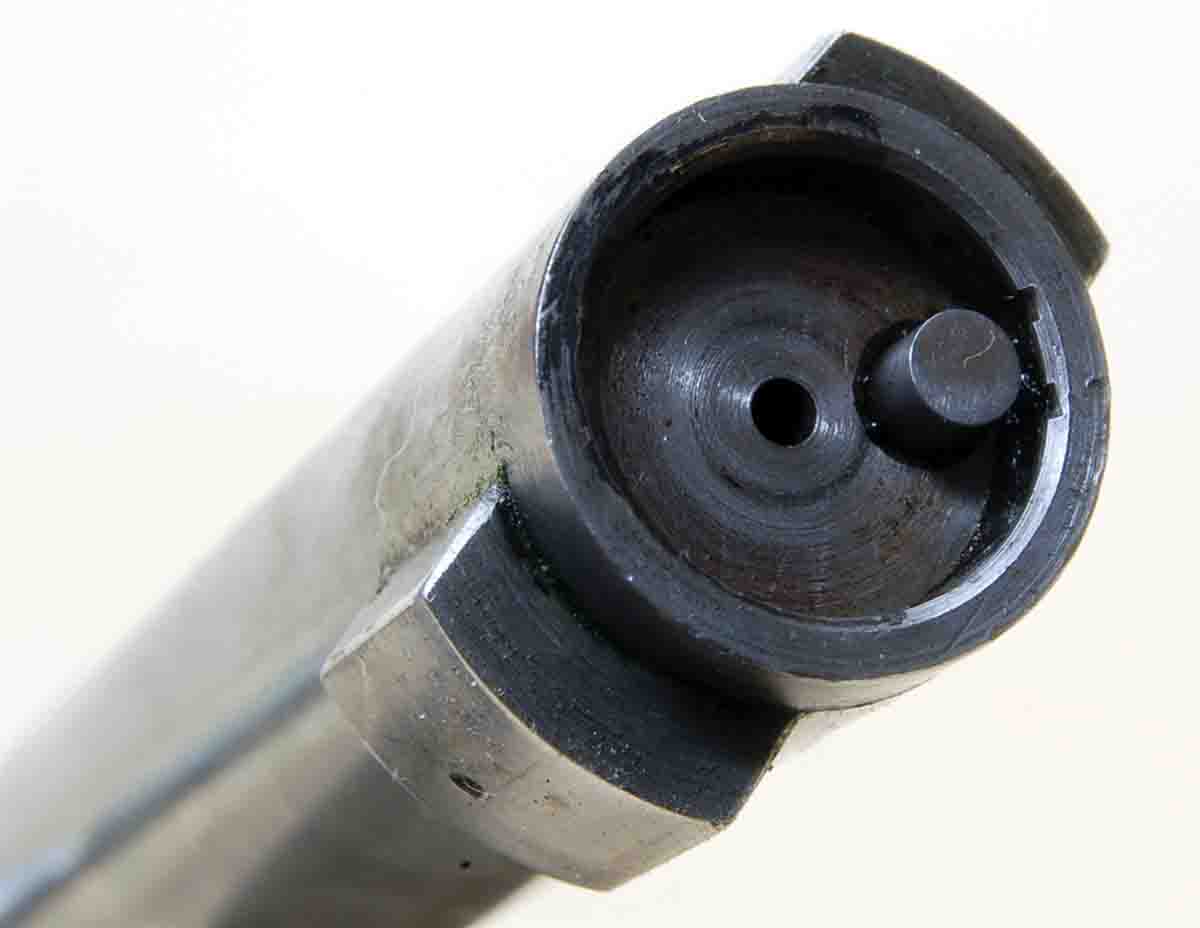
This Remington bolt face shows the cartridge base recess for the belted-magnum case and the thin rim of steel, in which the Remington extractor is enclosed. A larger-based case is impossible.
Two new loadings were offered the following year. A Swift Scirocco 180-grain bullet was listed at 3,250 fps and a Nosler Partition 200-grain bullet at 3,025, both from a 24-inch test barrel and both more or less able to withstand the high-impact velocity at 100 to 150 yards. In 2001, Remington yielded to the American demand for ever higher velocities by adding a Swift Scirocco II 150-grain bullet driven at 3,400 fps muzzle speed. Also added was a Core-Lokt 180-grain bullet at the standard 3,250 fps velocity. Its only conceivable purpose was to offer less expensive cartridges than those loaded with the trick bullets.
By 2005, cartridge selection from Remington had been reduced to those containing the 150- and 180-grain Scirocco and the 180-grain Core-Lokt. In 2014, there were 11 different loads offered in three “Power Levels.”
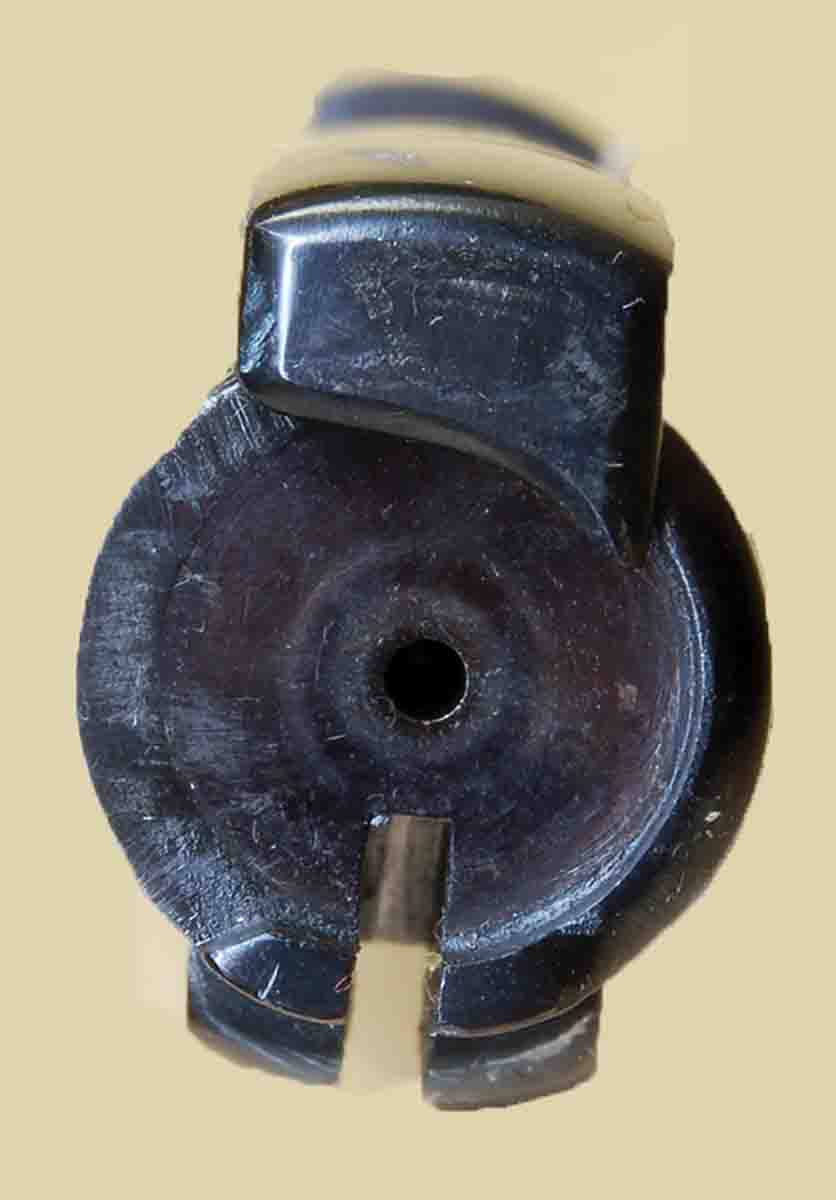
The raised ring of steel on the right and the bottom hold case rim under the extractor of this M98 Mauser bolt face opened up for a belted magnum case. Grinding more away is questionable.
In Level I, velocities were normal. Level II showed the 180-grain slugs dropping to 2,980 fps. Level III used only 150-grain bullets at 2,910 fps (same as the 30-06) and 2,815 fps (same as the 308 Winchester). Was the 300 RUM proving to be too much of a good thing? This was the last printed material put out by Remington.
Other companies loading ammunition include: Nosler, Cor-Bon, Federal and Hornady. Bullet weights and velocities mirror Remington offerings. Interestingly, they also mirror 300 Weatherby loadings. There isn’t a dime worth of difference between the two if barrel lengths are equal. Yes, handloaders sometimes show the 300 RUM ahead, but handloaders aren’t handicapped by being able to measure pressure!
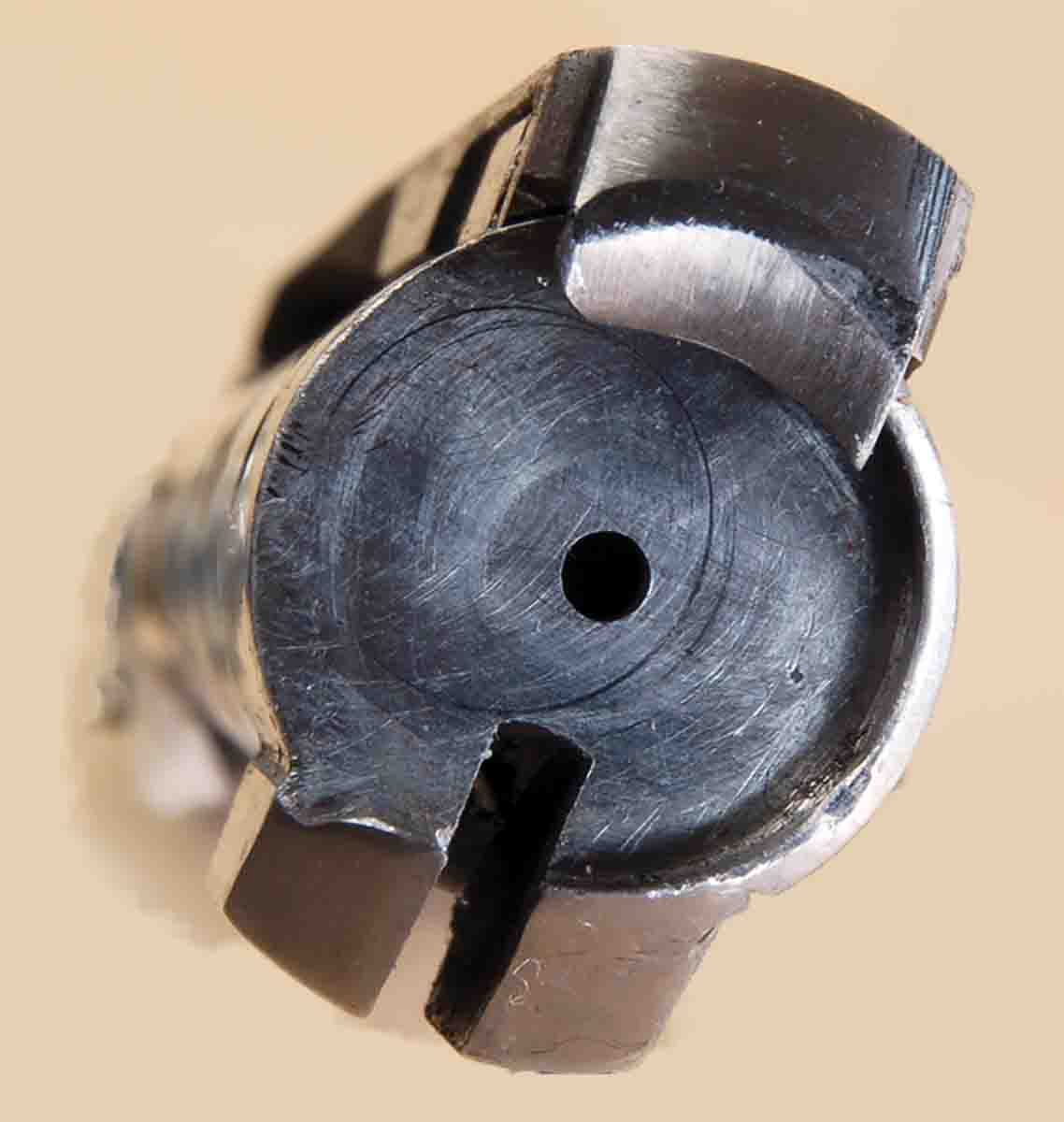
An M1917 Enfield bolt face opened up for 416 Rigby. The steel ring is only .045-inch wide, with some broken off at the bottom.
No doubt the 300 RUM will enjoy some popularity as a slightly cheaper alternative to Weatherby-brand rifles and ammunition. Given Remington’s current problems, the political situation in the U.S. and the inability of ammunition makers to produce enough of even a few common cartridges, the future of highly-specialized hunting rounds does not look very bright.
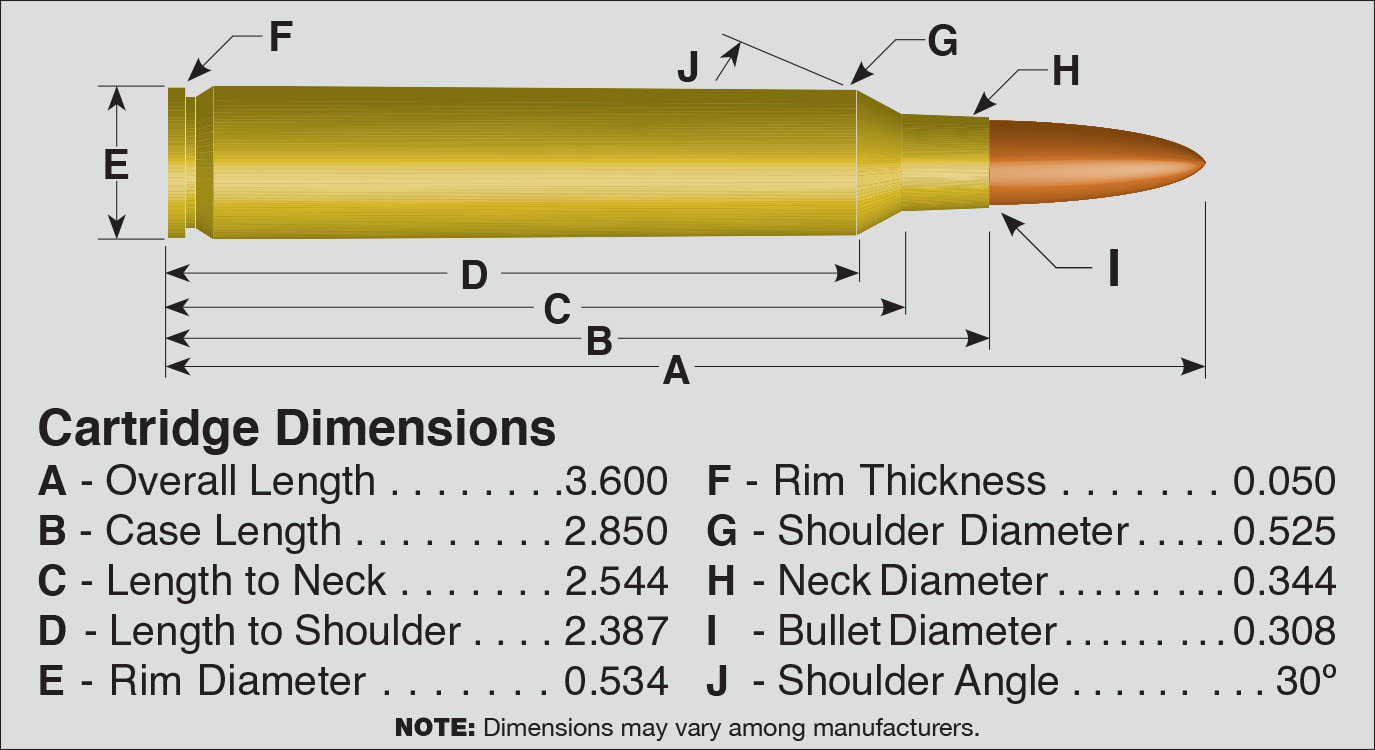







.jpg)


